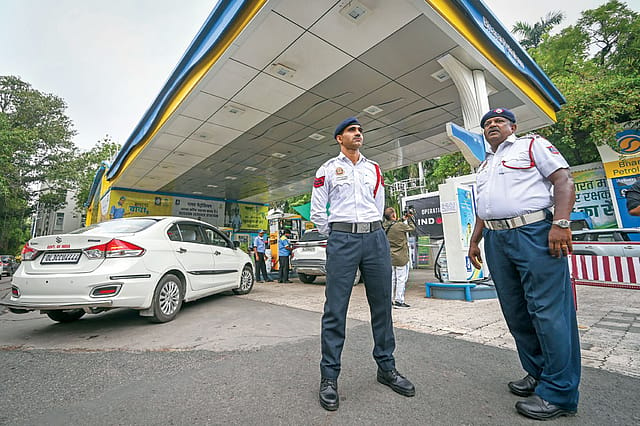Age of Vehicles and Pollution

IT WILL BE educative to consider just how delayed the decision to deny fuel from July 1 to vehicles exceeding stipulated periods for plying in the National Capital Region (NCR) region is. On April 7, 2015, the National Green Tribunal (NGT), noting the contribution of ageing vehicles to pollution, directed diesel vehicles more than 10 years old and petrol ones of more than 15 years vintage to be taken off the roads. The Supreme Court on October 29, 2018, upheld the order, ruling that such end-of-life (EOL) vehicles must not be permitted to operate.
Before the Delhi government's direction to deny fuel to EOL vehicles, the Commission for Air Quality Management (CAQM) in NCR and adjoining areas tested the automated number plate recognition system at the Capital's fuel pumps from June 1 to 23 and found 1.4 lakh of more than 8 lakh vehicles screened to be in violation of the Supreme Court and NGT orders. The findings validated the CAQM's April 23 order that said the liquidation of a large EOL fleet, comprising highly polluting vehicles of BS2 and BS3 standards, needs to be prioritised.
After a fairly uneventful start, the Delhi government wrote to CAQM on July 3 to put its order on hold until the ANPR system was "seamlessly" integrated across the entire NCR. Though the precise reasons are not known, it is possible that a backlash over rendering several vehicles inoperable prompted the Delhi government's rethink. The new city government's rollback—the first since it assumed office—is not a good idea and seems an afterthought.
Just ahead of the May 2024 Assembly election, the Aam Aadmi Party government issued a circular stating that enforcement drives will be carried out to remove EOL vehicles from public spaces and set out rules for scrapping such transport. The April CAQM order, however, is a much more effective way of dealing with the problem— detecting EOL vehicles at fuel pumps.
2025 In Review
12 Dec 2025 - Vol 04 | Issue 51
Words and scenes in retrospect
The use of smart technology links automatic number plate readers with VAHAN, the Centre's vehicle registration project, and instantly provides information about the age of a vehicle. In future, the validity of a vehicle's pollution certificate and insurance will also be checked. Concerns about unruly scenes as vehicles are impounded have not been borne out with Delhi government transport teams and deployment of police personnel reducing likely friction. Effective functioning of the EOL detection system can be a disincentive and persuade defaulting owners to keep vehicles off the road.
There is a division of opinion over banning older vehicles as some commentators argue that if well-maintained, they need not be polluting. There are strong views over the use of diesel too. Activists like Centre for Science and Environment's Sunita Narain oppose the use of diesel-powered vehicles while others feel the issue needs more deliberation. As things stand, public transport in Delhi-NCR does not use fossil fuels at all and is powered by compressed natural gas and electric vehicles.
The latest diesel and petrol engines in cars, including those used as commercial taxis, are BS6-compliant. Should these vehicles, too, be banned from plying once they reach the EOL limit? This is a call CAQM, the Centre and the Delhi government need to take. But as of now, an overwhelming number of EOL vehicles are not compliant with pollution norms being at best BS4. Concerns over the running of EOL vehicles have fallen on deaf ears even as the task force for management of Delhi's air pollution flagged the high number of offending vehicles on several occasions.
According to official data, Delhi has as many as 61.1 lakh EOL vehicles and just 22,397 and 39,273 were impounded in 2023 and 2024, respectively. The denial of fuel rule is to be extended to Gurugram, Faridabad, Ghaziabad, Gautam Buddha Nagar and Sonipat by November 1. Overall, it is a welcome step.
